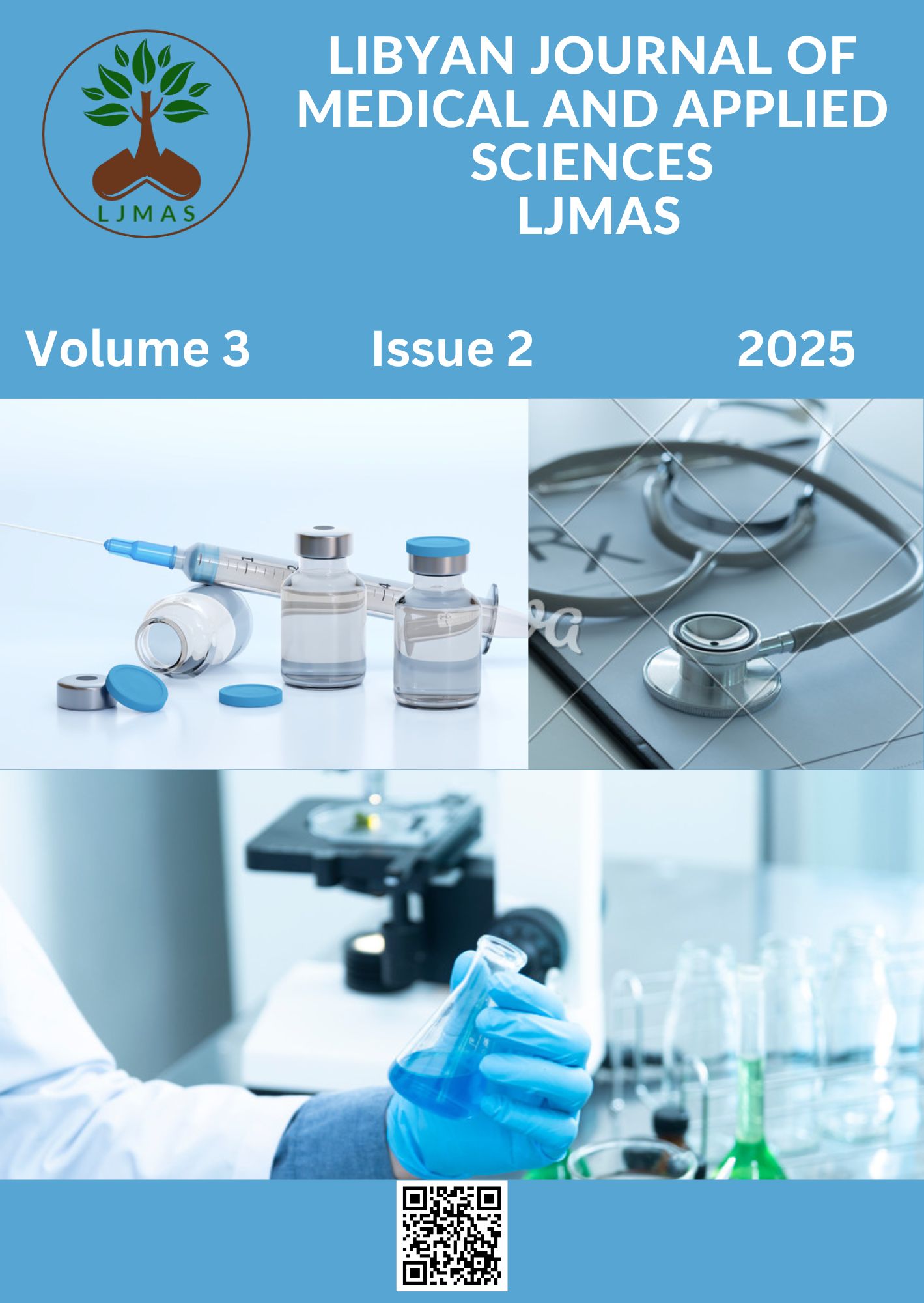Assessment of microbial contamination levels on children's playground surfaces in AL-Zawiya and Jdayem Parks using the ATP Hygiene Monitor (PCE ATP 1)
Main Article Content
Abstract
This study aimed to assess surface contamination levels of children’s playground equipment in two public parks in AL-Zawiya City, Libya (Jdayem Park and AL-Zawiya Park), using adenosine triphosphate (ATP) bioluminescence monitoring. The equipment surveyed included plastic slides, metal slides, iron swings, plastic swings, and rope swings. A total of 24 samples were collected from these surfaces using standardized ATP swabs, and results were classified based on established RLU thresholds (<100 RLU: clean, 100–300 RLU: marginally contaminated, >300 RLU: contaminated). The results revealed significant variability across equipment and surface types. The highest contamination level was observed on the iron swing at Jdayem Park (21–416 RLU), while the lowest levels were recorded on rope swings in AL-Zawiya Park (11–25 RLU). Plastic surfaces and rope swings generally exhibited lower contamination compared to metal surfaces, suggesting that surface material and design, combined with usage frequency, play a pivotal role in contamination accumulation. These findings align with previous studies that highlight the role of surface characteristics and environmental exposure in influencing microbial load. The results underscore the urgent need for targeted cleaning, disinfection, and regular quality monitoring of public playground equipment to maintain a safe, hygienic, and child-friendly recreational environment.
Article Details

This work is licensed under a Creative Commons Attribution 4.0 International License.





